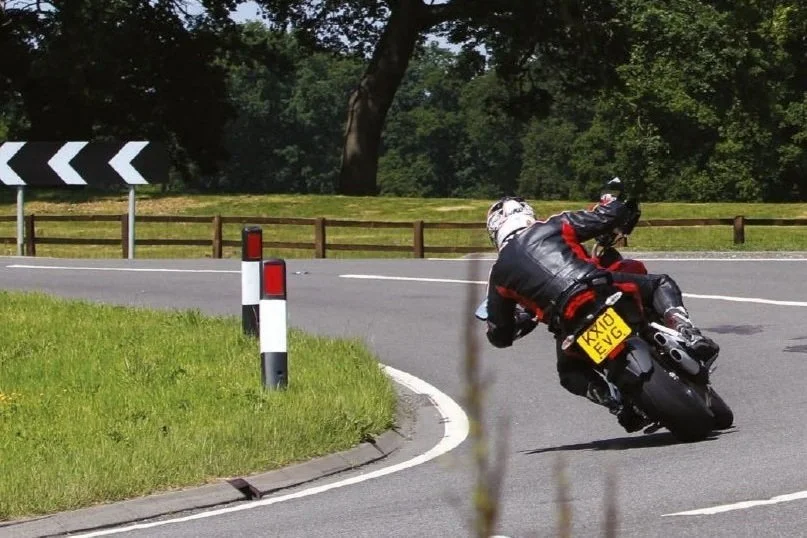PLANNING FOR CORNERS
We’ve looked at planning, in more general terms, but let’s focus down on planning for the fun bit: corners.
By gathering the correct information early you can get the speed right for every corner, and just like that your riding will be safer and more relaxed, and, crucially, faster.
As always, reading the road is critical. We’ve touched on this a lot. But your ability to gather the right information early and in the right level of detail will determine the safe speed you can ride through any given bend at.
Really, you should see and register the bend as soon as it is visible to the naked eye, even if it’s a mile away, it should at least be on your ‘radar’. Then, as you approach you’ll pick up other indications to the type of bend: warning signs, chevrons, road markings, plus other hazards and the cross view.
Assessing all the indicators will impact your planning for corner entry and exit.
All of these indicators point to the direction the bend goes, the severity, and if it’s a single or double bend. When you’re even closer you’ll be able to detect things such as camber and the quality of the road surface, which may also impact your planning.
On initial turn in you’ll be searching for further information, such as opposing traffic and signs the corner is opening up.
Where to put the bike
So, where do you place your motorcycle? At the most basic level, it is about positioning yourself to extend your view. In simple terms, for a right hand bend position your bike to the left of the road, and you want to remain there until your view opens up sufficiently to to begin to move back towards the middle of the road. For a left-hander, the opposite is true, and you keep right.
Of course, there are many variables that could affect your positioning, such as road surface or conditions, other traffic, or the view across the bend, or other potential hazards such as junctions.
How fast to go
Entering a corner at the fastest possible speed is different to cruising through at a brisk but leisurely pace. This can cause confusion with social media users and the like, who start to discuss the merits of trail braking and how far to hang off, Marquez-style.
The thing is, it is rarely the severity of the bend or the capability of the bike that limits your speed, but it is almost always your ability to be able to stop in a hurry, and on your own side of the road.
So, there is no one correct speed for any bend, and instead it depends on a multitude of factors: how good your reactions are and machine skill is, your ability to read the road, the weather and road surface conditions, and yes, your bike’s tyres, brakes, suspension, and so on.
How to assess entry speed
There are many techniques to this. A good one, as a rule of thumb, is that the more road furniture there is, the more severe the bend. Another good weapon in your arsenal is the cross view: looking ahead to see where the bend goes, plus the speed of other traffic is also a good indication.
What is the vanishing point?
The vanishing point, or limit point, is another indicator as to the severity of the bend. On entry, where the outside kerb and inside kerb appear to meet from your point of view, that is the vanishing point or limit point.
On approach, if this point remains static, it is likely to be a tight bend. The longer it stays static, the tighter it is likely to be. If the point moves away on entry, it is likely to be a fairly loose or open bend.
We use the limit point to set the correct entry speed, and follow three key steps:
As you approach, note where the limit point is. If it remains static, slow down.
Once the limit point begins to move away from you at the speed you’re approaching at, you are at the correct speed.
Once you are in the end and limit point begins to move away faster than you are approaching it, the corner is opening up and you can begin to get on the throttle.
Gear
To scythe through bends smoothly and in complete control, the correct use of gears is also important: too high a gear will give a wallowy ride through the bend and limit your ability to control your speed, while too low a gear will prevent positive exit drive. The correct gear gives you good control and great exit drive.


